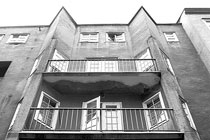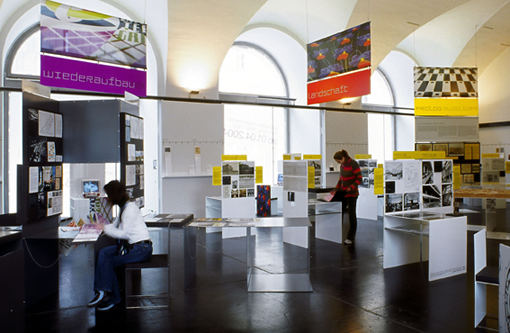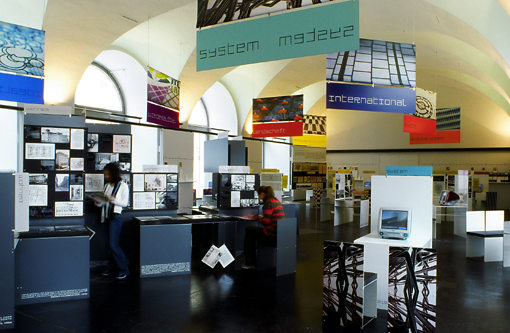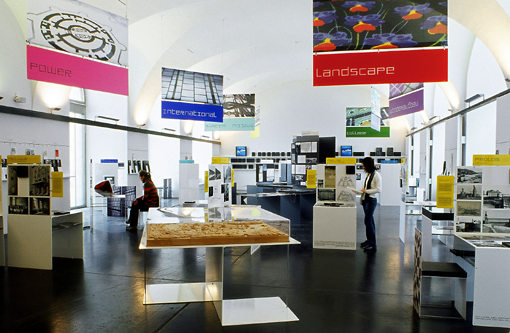Guided Tour
Special Guided Tour: Red Vienna and Housing

'a_show' special guided tour
© Achleitner Archiv
The tour concentrates on the topics ‘Red Vienna and Housing’.
Red Vienna
In 1919 Vienna became the first city of over a million inhabitants to be run by the Social Democrats. In 1922 Lower Austria and Vienna were separated and Vienna became a provincial state in its own right with control over its own revenue. This was the era of Red Vienna, and the beginning of a communal social experiment primarily based on polices promoting housing, welfare and education.
The introduction of a housing development tax by executive councillor for finance Hugo Breitner made a municipal building programme viable on a large scale. The extensive complexes, usually built by students of Otto Wagner, did not only include homes but also social facilities like kindergartens, health care, libraries, laundries, lecture halls, theatres and parks. These municipal developments (superblocks) were several stories high, usually built on the periphery with generous courtyards (very often a recession of these occurred to behind the building line in favour of front gardens, sometimes also the traversing of roads or building deck access directly above the pavement).
Housing
By 1934 the City of Vienna had built 61,175 apartments in 348 housing complexes as well as 42 estates with 5,257 houses. In 1934 one tenth of the population of Vienna lived in municipal housing. The sites were taken from undeveloped grounds around the city, some of which were close to existing lines of public transport. In contrast to the architecture of the avant-garde in the neighbouring countries to Austria and the CIAM (Congres Internationaux d’architecture moderne) programme, in Vienna the issue was not the total restructuring of the city according to functional criteria but the preservation of the diversity of the urban fabric. The criticism that the mass housing of Red Vienna is less progressive due its the lack of aesthetic characteristics is no longer tenable.
In the history of Austrian architecture housing or housing issues have repeatedly been allotted a special and characteristic role. Between the poles of a bourgeois culture of representation and the ‘existence minimum’ a varied spectrum of concepts for ‘living properly’ has unfolded.
The first part of this historic survey, which covers a period from 1850-1958, focuses on the most diverse forms of housing according to the following categories:
1. The Ring Road Palace, The Bourgeois Apartment, Workers’ Housing, Sub-Standard Accommodation
2. The Bourgeois Interior
3. From the Floor Plan to the Raumplan
4. The Workers’ Colony, The Siedlerbewegung
5. Red Vienna
6. The Werkbundsiedlung, The Housing Machine
7. Postwar Fast-Lane Housing




